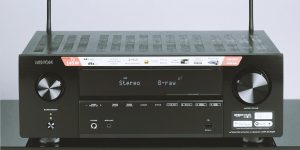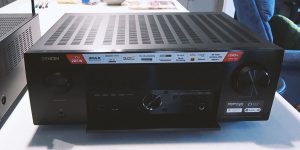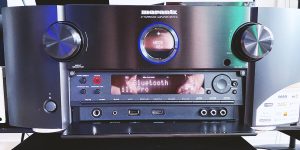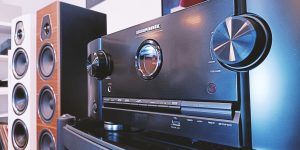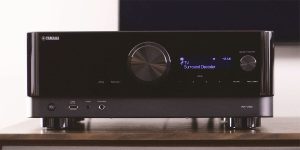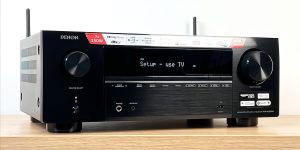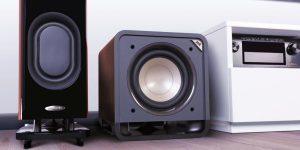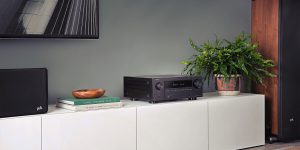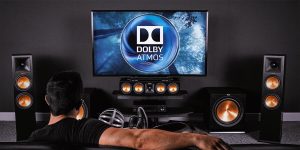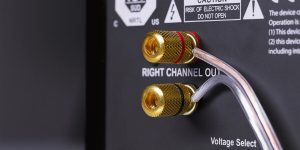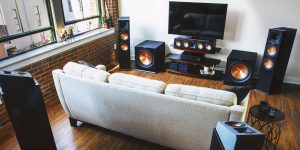The sound quality greatly depends on the compatibility between the main parts of your home theater system – the receiver and speakers. In this article, I focus on the most important details of how to match speakers to amplifiers to never experience any equipment breaking, and enjoy the quality of your theater sound to the fullest!
The importance of matching speakers with the receiver
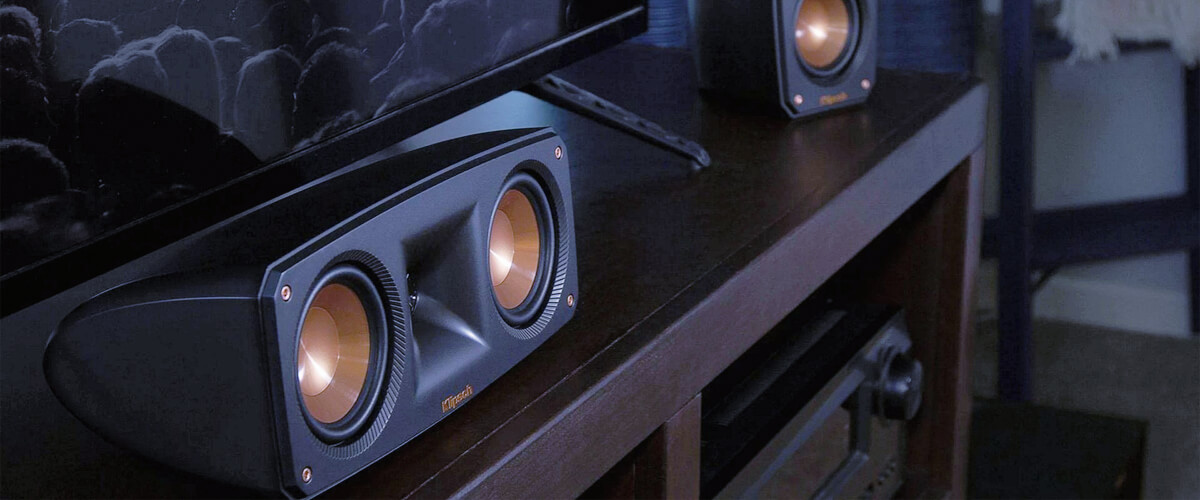
The compatibility between your speakers and the receiver is responsible for the most important characteristics of your audio system: its sound quality and longevity.
The impact on sound quality
By paying attention to the proper matching of speakers to receivers, you can maximize the audio quality, creating an immersive and enjoyable listening experience. Below, I prepared the table with detailed explanations of all the meaningful aspects of proper speakers and a receiver matching in terms of sound improvement:
| Reason | How it helps to improve the sound quality |
|---|---|
| Balanced Frequency Response | By selecting speakers with a frequency response that complements the receiver’s capabilities, you can ensure a balanced and accurate audio reproduction across the entire frequency spectrum. |
| Power Handling and Dynamics | Proper matching ensures that the receiver can supply enough power to the speakers, allowing them to deliver the full impact of audio dynamics, including both quiet subtleties and intense peaks, without strain or distortion. |
| Speaker Sensitivity | Matching speakers and receivers with compatible sensitivity levels ensures that the system can achieve desired volume levels without compromising sound quality. |
| Impedance Matching | Proper impedance matching between the speakers and the receiver is essential for maintaining the amplifier’s stability and ensuring efficient power transfer. |
In terms of sound quality, correctly matching speakers with the receiver can create a cohesive and balanced audio system that delivers accurate frequency response, optimal dynamics, adequate volume levels, and efficient power transfer.
The impact on system longevity
Matching speakers to receivers appropriately can also significantly impact the longevity and durability of the audio system. Why? – See the table below:
| Reason | How it helps to improve the system’s longevity |
|---|---|
| Power Handling and Speaker Protection | You can ensure that the speakers operate within safe limits, minimizing the risk of damage and extending their lifespan. |
| Impedance Matching and Amplifier | You maintain a stable operating environment for the amplifier, reducing the risk of overheating or premature failure. |
| Protection Circuitry | By ensuring proper matching, you allow the protection circuitry to function optimally, protecting both the speakers and the receiver from potential damage. |
| System Integration and Compatibility | Ensuring compatibility between the speakers and the receiver in terms of connection types, wiring configurations, and overall system design can help maintain a stable and reliable setup. |
By paying attention to speakers and receiver matching in terms of power handling, impedance, and overall system compatibility, you can help prolong the lifespan of your audio system, as well as your enjoyment of its really exhilarating sound.
How to match speakers with the receiver
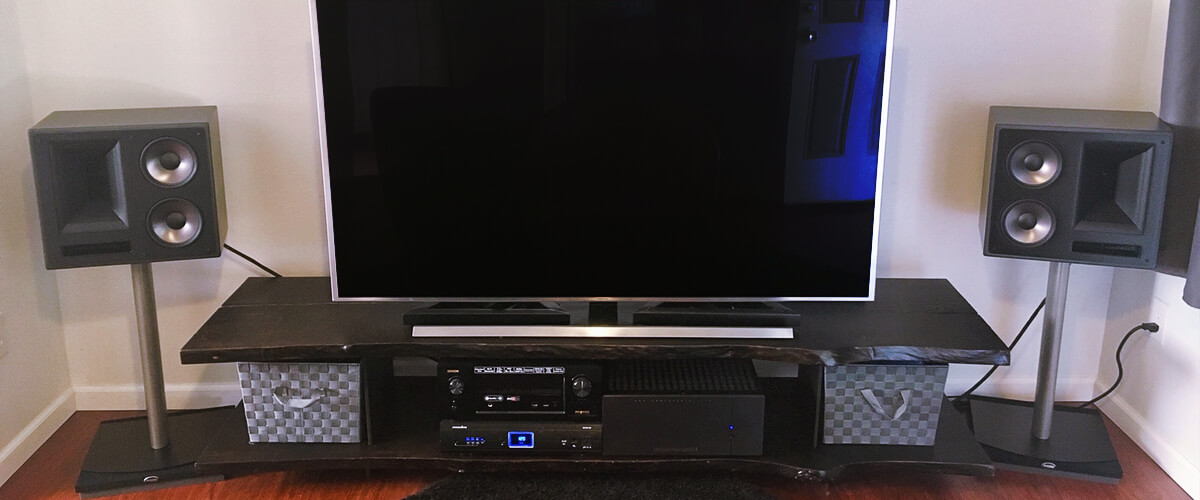
To effectively match speakers with a receiver, you should consider several factors. I advise using my step-by-step guide to help you:
- Determine Your Requirements: Consider the room size, intended use (such as music listening or home theater), desired sound quality, and budget.
- Check Speaker Specifications: Look for information such as power handling (wattage), impedance (ohms), frequency response range, and sensitivity, and check if they’re compatible with the receiver’s.
- Consider Power Compatibility: The receiver’s power output should be suitable for the power handling capabilities of the speakers.
- Match Impedance: A general guideline is to have the speaker’s impedance match or be slightly higher than the receiver’s output impedance.
- Consider Speaker Sensitivity: If you prefer higher volume levels, choose speakers with higher sensitivity. Ensure that the receiver can provide enough power to drive the speakers to your desired volume without distortion or strain.
- Surround Sound Compatibility: If you are setting up a surround sound system, ensure that the receiver supports the desired 3D sound formats (e.g., Dolby Atmos, DTS:X) and the number of speakers you plan to use. Consider the receiver’s channel outputs and speaker configuration options to match your desired setup.
- Physical Compatibility: Consider the physical aspects such as speaker size, form factor, and aesthetic preferences. Also, check that the connectors on the speakers and the receiver are compatible and facilitate easy connection.
- Seek Expert Advice: If you are unsure or want professional guidance, consult audio experts.
Remember, it’s essential to refer to the product manuals, specifications, and recommendations from the manufacturers of both the speakers and the receiver to ensure compatibility and optimal performance. Correctly matching speakers with a receiver can result in a well-integrated audio system that delivers optimal sound quality and longevity.
Common myths and misconceptions about speaker-receiver matching
When it comes to matching speakers with a receiver, several common myths and misconceptions can lead to confusion. Here are a few of them, and I think you’ll remember them easily:
Myth 1. Speakers need to have higher wattage than the receiver’s power output.
Reality: Speakers with lower power ratings can still work well with a receiver as long as the receiver’s power output falls within the speaker’s recommended range.
Myth 2. Impedance must be an exact match between the speakers and the receiver.
Reality: It is generally recommended to have the speaker’s impedance match or be slightly higher than the receiver’s output impedance. Most modern receivers can handle a range of speaker impedance without significant issues.
Myth 3. Higher sensitivity speakers always provide better sound quality.
Reality: Sound quality depends on various factors such as speaker design, frequency response, and overall construction, not just sensitivity.
Myth 4. Only expensive speakers and receivers can produce good sound quality.
Reality: There are affordable options that can deliver excellent performance. Sound quality depends on the overall design, engineering, and matching of components rather than price alone.
Myth 5. Any speaker can work with any receiver.
Reality: While it is possible to connect any speaker to any receiver, optimal performance and compatibility are achieved through proper matching.
It is essential to base decisions on accurate information, consult reliable sources, and refer to the specifications and recommendations provided by the manufacturers when matching speakers with a receiver.
Potential issues with mismatched speakers and receivers
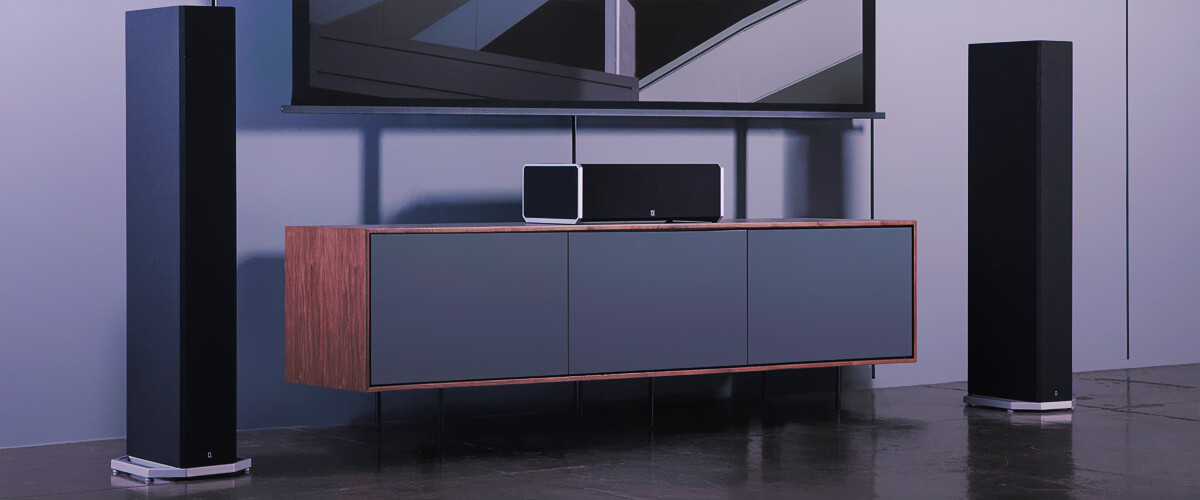
The failed speakers and receiver matching can lead to various issues that can affect audio performance and potentially damage the equipment. I think it’s hardly possible to forget the real effect of speakers-receiver mismatching if it happened at least once in your life. Here is the full list of what you might expect from such a disaster:
- Distorted Sound: If the receiver’s power output exceeds the speakers’ power handling capabilities, the speakers can be overdriven, causing distortion and potential damage to the speaker drivers. Conversely, if the receiver’s power output is insufficient for the speakers, the sound may be weak, lacking dynamics, and distorted when pushed to higher volume levels.
- Speaker Damage: If the receiver supplies more power than the speakers can handle, it can cause overheating and damage to the voice coils, cones, or other components. This can result in reduced speaker lifespan, degraded sound quality, or even complete failure.
- Amplifier Strain: A receiver that is not properly matched with the speakers’ impedance can strain the amplifier. If the speaker impedance is too low for the receiver, it can cause the amplifier to work harder, potentially overheating and affecting its longevity. Conversely, if the speaker impedance is too high, the amplifier may not deliver enough power, resulting in reduced performance.
- Imbalanced Frequency Response: Different speakers have different frequency response characteristics, and if the speakers are not well-matched with the receiver, certain frequencies may be overemphasized or attenuated. This can result in uneven sound reproduction and compromised audio quality.
- Inefficient Power Transfer: Impedance mismatch between the speakers and the receiver can result in inefficient power transfer. If the speaker impedance is too low or too high compared to the receiver’s output impedance, it can cause a mismatch in the electrical load, leading to power loss and reduced efficiency in driving the speakers.
- System Instability: This can manifest as intermittent sound dropouts, signal loss, or unreliable performance. The combination of incompatible components can lead to connectivity issues, unreliable connections, or improper functioning of system integration features.
To avoid these issues, it is important to carefully match speakers and receivers based on their specifications, including power handling, impedance, sensitivity, and other relevant factors.
So, I recommend following my advice along with referring to the manufacturer’s recommendations and seeking expert advice in order to ensure proper matching and optimize the performance and longevity of your audio system!
We are supported by our audience. When you purchase through links on our site, we may earn an affiliate commission at no extra cost to you.
Our newsletter
* We will never send you spam or share your email with third parties

![Best Stereo Receivers [Reviewed and Tested]](https://mediapro-av.com/wp-content/uploads/2024/01/best-stereo-receiver-300x150.jpg)

